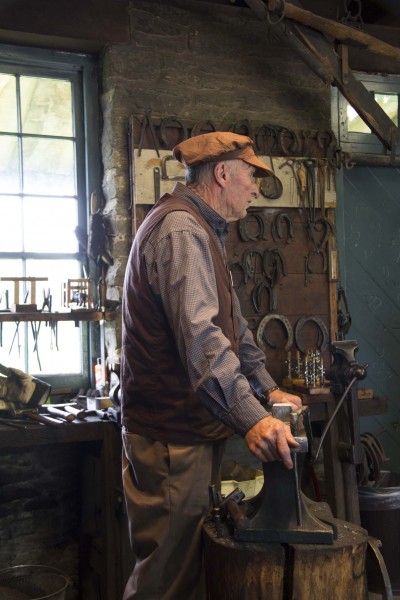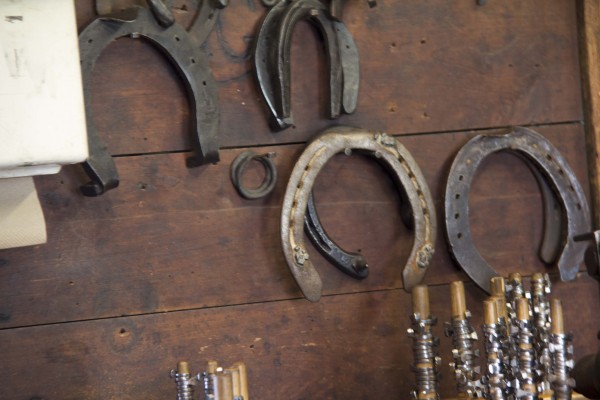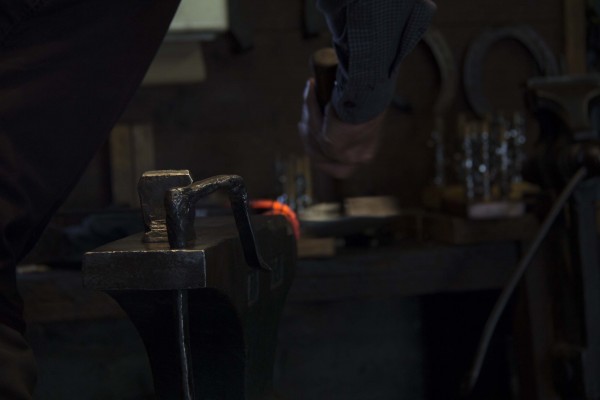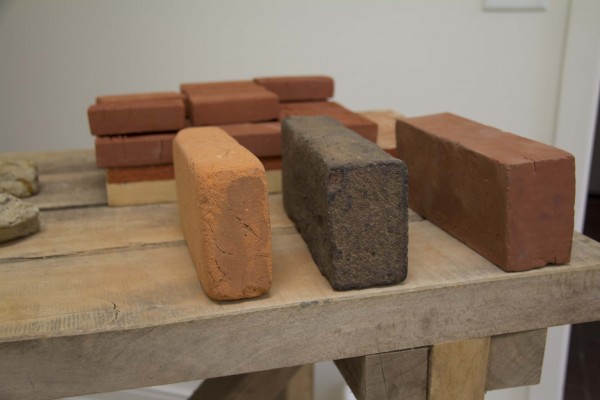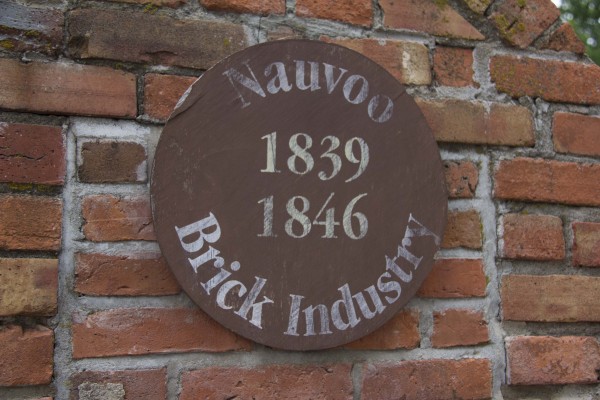Today a senior missionary stokes the once bellowed fire by a flick of a switch. Hot air taunts the red coals to sing heat into a lead stick. Now glowing the iron worker transplants the soft medal to a place where force can be applied over and over, molding and shaping a useless piece of iron into a tool. The blacksmith shop is one of many local businesses that worked all in conjunction with one another to create the prosperous and industrious Nauvoo. The once hard medal shaft glows in the fiery embers. In the heat of opposition God molds us into a working tool for the salvation of mankind.
A few blocks away stands a modern building where bricks are created and shared. In times of old, Nauvoo was created from a swamp land. They drained the bog, and found a wellspring of natural clay from which to make bricks. From a fine sand, they would mix a bit of water and work until the perfect consistency was created. With a bit of pounding into a mold, thousands of bricks were neatly stacked in order to leave space underneath for large fires. These bricks needed to be cooked, and hardened to withstand the wet climate and vastly fluctuating temperatures. Even kilns in big cities couldn’t supply a space big enough for the four million bricks being produced annually in this budding community. And so they used the bricks as the kiln to bake the bricks. A fire in the belly of the make shift brick abode was created and covered with sand. The high temperatures singed the bricks closest to the flames, perfectly crisped the middle bricks and barely warmed the outside bricks. All of these bricks were uniform in size, and vastly different in their long term uses. The fierce solid blackened bricks are unpleasing to the eye, but very strong in statue. They are used as the center brick in a three brick walled home. They are sturdy and immovable. Wilford Woodruff thought that a two brick wall would suffice for his Nauvoo home, and the Cultural Hall. These structured benefitted from their quick building, and cost less because fewer bricks were required. However, when a tornado hit town, both of these convent structures were destroyed. When he built his home for the second time, he used the recommended three brick layers for each wall. That home was lived in by the Woodruff family for roughly 100 days before making their way on the exodus, but it still stands to this day. The bricks which are cooked perfectly come out as a vibrant red, they adorn the outside of the home, and can be seen throughout Nauvoo. The lightest cooked bricks are a dark salmon color. They are hardened, but the coloring is much softer. Our tour guide shares with us that these bricks are used for the interior home walls, and with a little white wash make for a perfect surface for a kitchen.
Like life, often we experience the firery furnace. We have been worked to the right consistency, molded and now we face the heat of adversity. Each of us come out looking different, based on where we were and how we were cooked. But each of us has a divine plan for our life, given by our great Redeemer.

